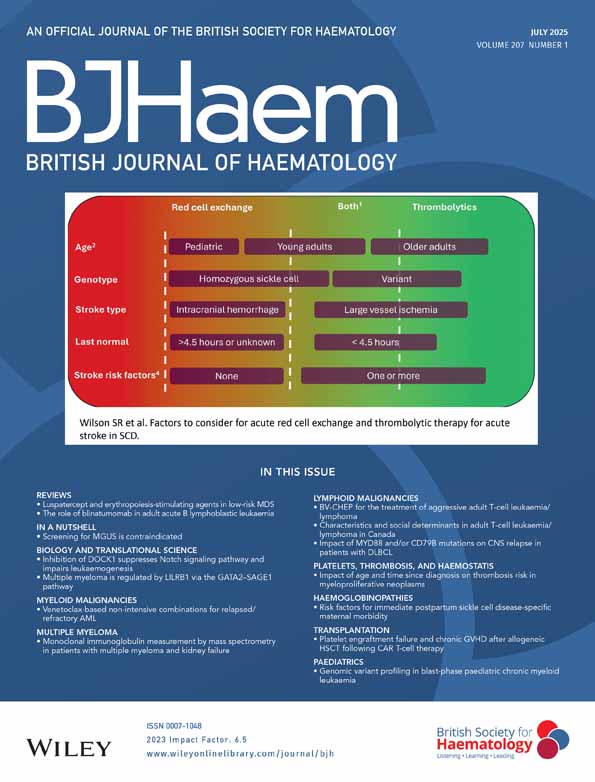Waldenström's macroglobulinaemia: a prospective study comparing daily with intermittent oral chlorambucil
Abstract
This prospective study compared continuous and intermittent chlorambucil therapy of untreated Waldenström's macroglobulinaemia. The diagnosis was established by the presence of an IgM monoclonal (M-) protein in the serum, an infiltrate of lymphocytes and plasma cells in the bone marrow, anaemia or other laboratory abnormalities, physical findings or constitutional symptoms. Patients were randomized to receive chlorambucil 0.1 mg/kg/d or chlorambucil 0.3 mg/kg/d orally for 7 d, repeated every 6 weeks. Criteria for response included 50% or more reduction of serum M-protein, increase in haemoglobin level of 2 g/dl without transfusion, ≥ 50% decrease of urine M-protein, or a reduction of 2 cm in the size of the liver, spleen or lymph nodes. Forty-six patients were randomized to continuous chlorambucil (n = 24) or to intermittent chlorambucil (n = 22). Nineteen (79%) (95% CI = 58–93) of the 24 patients given continuous therapy had an objective improvement by either reduction of serum M-protein or increase in haemoglobin. Fifteen (68%) (95% CI = 45–86) of the 22 patients given chlorambucil intermittently had an objective response. The size of the liver decreased by ≥ 2 cm in 55% of patients, and the size of the spleen decreased ≥ 2 cm in 67%. Lymphadenopathy decreased in 71%. Acute leukaemia or refractory anaemia developed in four patients. The median duration of survival was 5.4 years, and there was no difference between the regimens. Chlorambucil is effective for the treatment of Waldenström's macroglobulinaemia. Patients must be treated for at least 6 months before therapy is abandoned because response is slow. Chlorambucil is an effective agent and should be compared with purine analogues or rituxan (Rituximab) in a prospective study.




